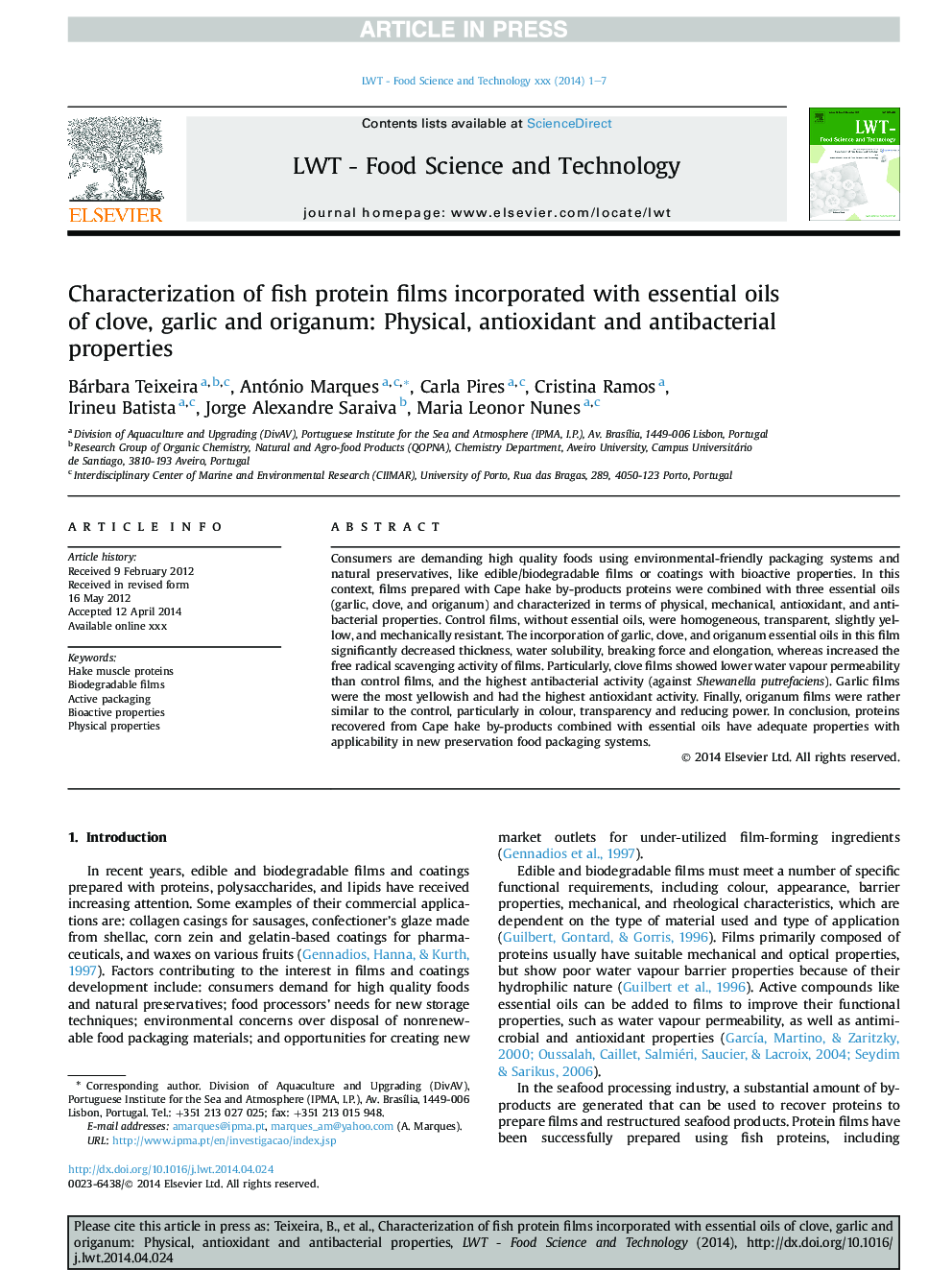| Article ID | Journal | Published Year | Pages | File Type |
|---|---|---|---|---|
| 6403692 | LWT - Food Science and Technology | 2014 | 7 Pages |
Abstract
Consumers are demanding high quality foods using environmental-friendly packaging systems and natural preservatives, like edible/biodegradable films or coatings with bioactive properties. In this context, films prepared with Cape hake by-products proteins were combined with three essential oils (garlic, clove, and origanum) and characterized in terms of physical, mechanical, antioxidant, and antibacterial properties. Control films, without essential oils, were homogeneous, transparent, slightly yellow, and mechanically resistant. The incorporation of garlic, clove, and origanum essential oils in this film significantly decreased thickness, water solubility, breaking force and elongation, whereas increased the free radical scavenging activity of films. Particularly, clove films showed lower water vapour permeability than control films, and the highest antibacterial activity (against Shewanella putrefaciens). Garlic films were the most yellowish and had the highest antioxidant activity. Finally, origanum films were rather similar to the control, particularly in colour, transparency and reducing power. In conclusion, proteins recovered from Cape hake by-products combined with essential oils have adequate properties with applicability in new preservation food packaging systems.
Related Topics
Life Sciences
Agricultural and Biological Sciences
Food Science
Authors
Bárbara Teixeira, António Marques, Carla Pires, Cristina Ramos, Irineu Batista, Jorge Alexandre Saraiva, Maria Leonor Nunes,
